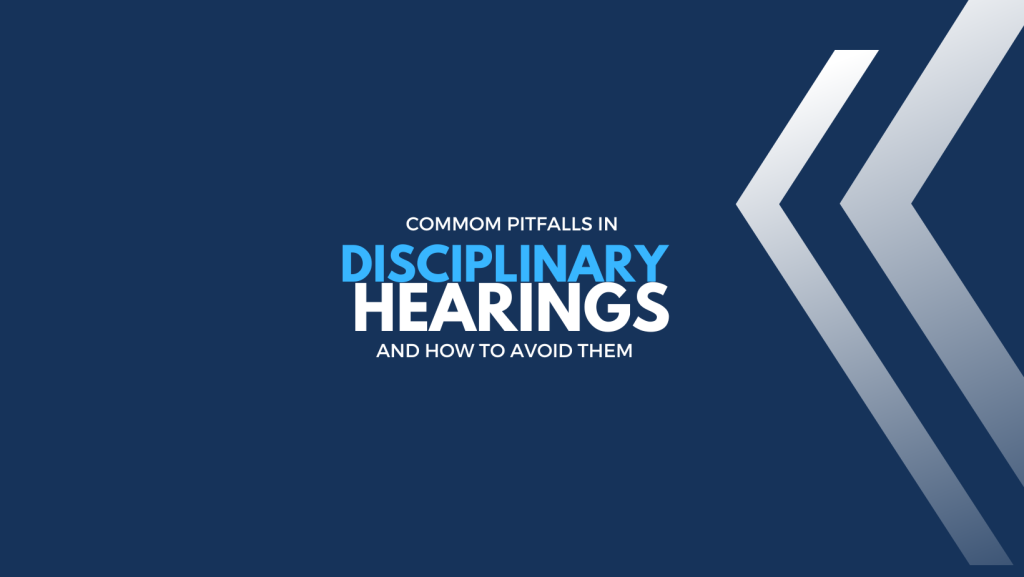Disciplinary hearings are critical processes that organizations utilize to address alleged misconduct and maintain a fair and just working environment. However, several common pitfalls can compromise the effectiveness and fairness of these hearings. In this article, we will explore these pitfalls and provide insights into how they can be avoided.
1. Lack of Clear Policies and Procedures
Pitfall: One of the most significant pitfalls is a lack of clear policies and procedures governing disciplinary hearings. Without well-defined guidelines, both employees and employers may find themselves navigating a complex process without clarity.
Prevention: Establish and communicate comprehensive disciplinary policies that clearly outline the procedures for conducting hearings. Ensure that all employees are aware of these policies, and provide training to managers and HR personnel to consistently apply them.
2. Inadequate Notice of Charges
Pitfall: Insufficient or unclear notice of charges can hinder the accused party\’s ability to prepare a defense. Vague or ambiguous charges may lead to misunderstandings and unfair outcomes.
Prevention: Provide a detailed and specific notice of charges to the accused, clearly outlining the alleged misconduct. This enables the accused party to understand the allegations fully and prepare a robust defense.
3. Biased Decision-Making Body
Pitfall: The composition of the decision-making body may be perceived as biased, leading to concerns about fairness and objectivity.
Prevention: Ensure that the decision-making body is impartial and does not have a direct interest in the outcome of the disciplinary hearing. Consider involving individuals from different departments or, if applicable, external professionals to enhance objectivity.
4. Failure to Consider Mitigating Factors
Pitfall: Disciplinary hearings that neglect to consider mitigating factors may result in disproportionately severe consequences for the accused.
Prevention: Encourage the decision-making body to consider all relevant circumstances, including any mitigating factors that may have contributed to the alleged misconduct. This ensures a fair and proportionate outcome.
5. Inadequate Documentation
Pitfall: Poor documentation of the disciplinary process can lead to disputes and challenges down the line. Incomplete records may make it difficult to defend the fairness of the hearing.
Prevention: Thoroughly document all aspects of the disciplinary process, including the notice of charges, evidence presented, witness testimonies, and the decision. This documentation serves as a comprehensive record and can be essential in the event of an appeal.
6. Ignoring the Right to Representation
Pitfall: Disregarding the right to representation can create perceptions of unfairness and compromise the accused party\’s ability to present an effective defense.
Prevention: Clearly communicate and uphold the right to representation, as per company policy. Ensure that individuals facing disciplinary actions have the opportunity to choose suitable representatives, whether legal counsel, a colleague, a union representative, or an HR advisor.
7. Lack of Confidentiality
Pitfall: Failing to maintain confidentiality can result in a hostile work environment and potential legal ramifications.
Prevention: Emphasize the importance of confidentiality throughout the disciplinary process. Limit access to information to those directly involved in the proceedings and communicate the organization\’s commitment to maintaining privacy.
By identifying and proactively addressing these common pitfalls, organizations can enhance the fairness, transparency, and effectiveness of their disciplinary hearings. A well-structured and consistently applied disciplinary process contributes to a healthy workplace culture and ensures that individuals are held accountable in a fair and just manner.

